Global Regulatory Update, Sept. 27-Oct. 3, 2020
September 27, 2020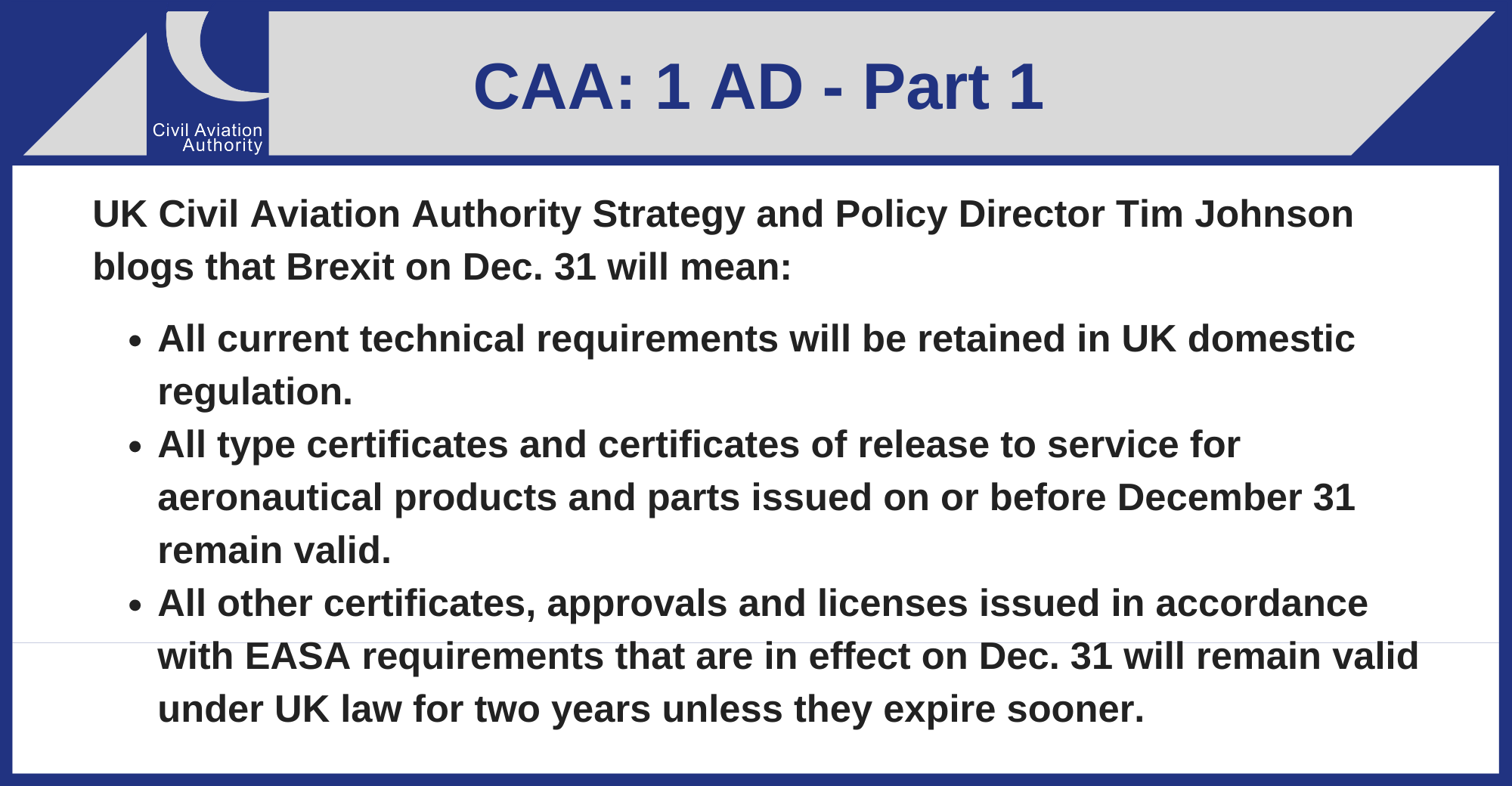
UK Civil Aviation Authority Strategy and Policy Director Tim Johnson blogs that Brexit on Dec. 31 will mean:
- All current technical requirements will be retained in UK domestic regulation.
- All type certificates and certificates of release to service for aeronautical products and parts issued on or before Dec. 31 remain valid.
- All other certificates, approvals and licenses issued in accordance with EASA requirements that are in effect on Dec. 31 will remain valid under UK law for two years unless they expire sooner.
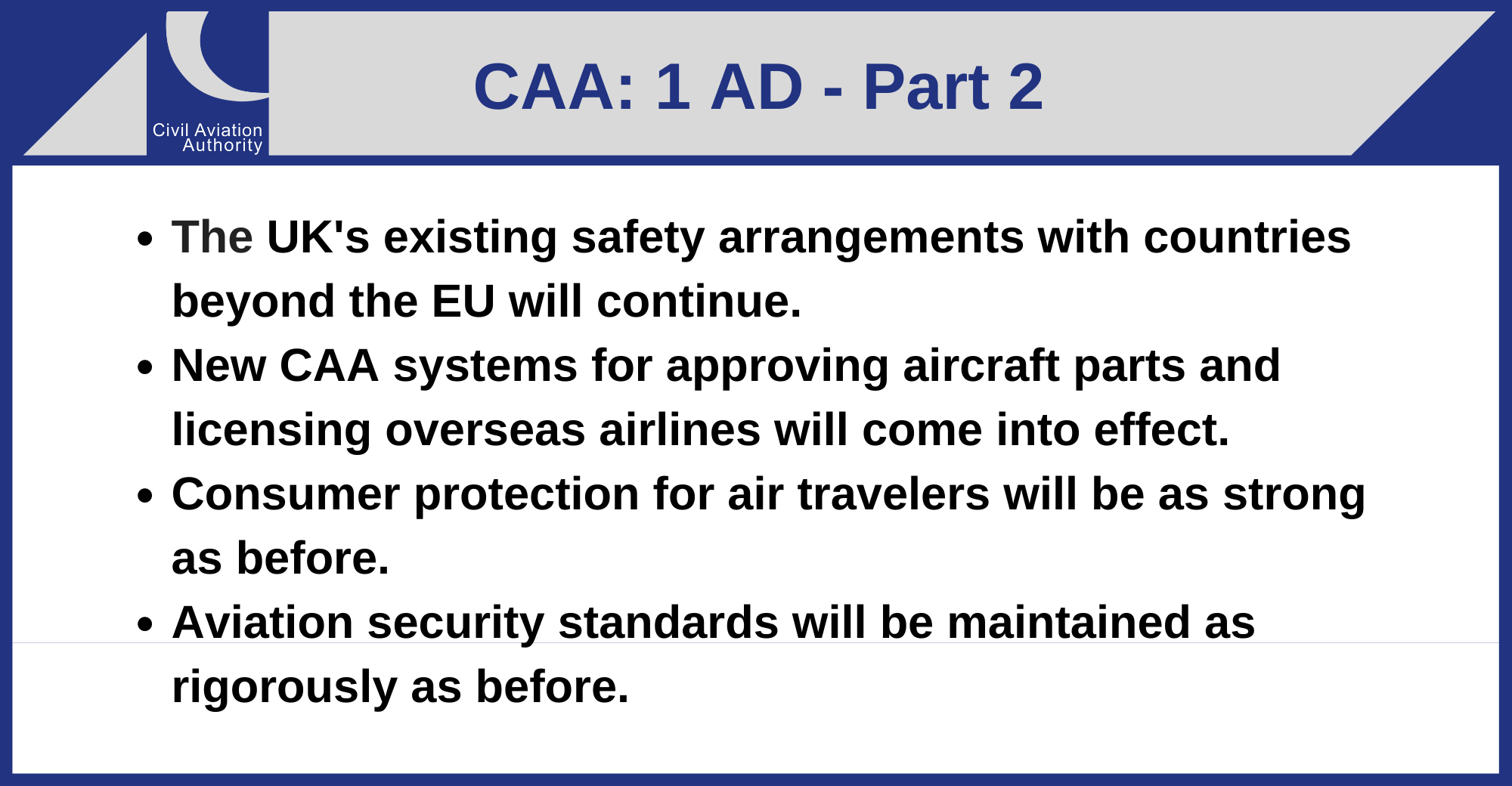
- The UK's existing safety arrangements with countries beyond the EU will continue.
- New CAA systems for approving aircraft parts and licensing overseas airlines will come into effect.
- Consumer protection for air travelers will be as strong as before.
- Aviation security standards will be maintained as rigorously as before.
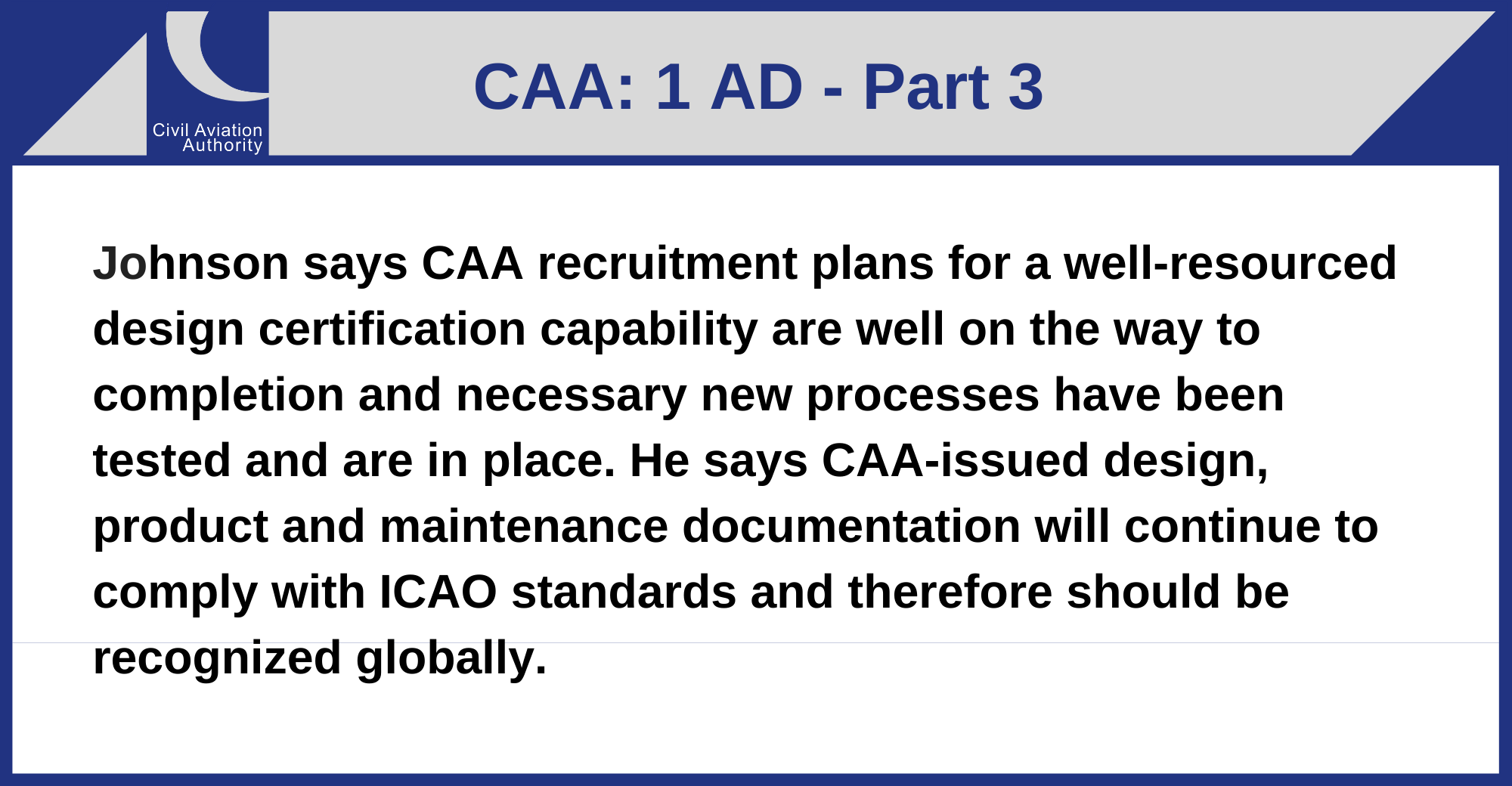
Johnson says CAA recruitment plans for a well-resourced design certification capability are well on the way to completion and necessary new processes have been tested and are in place. He says CAA-issued design, product and maintenance documentation will continue to comply with ICAO standards and therefore should be recognized globally.

To coordinate pandemic control with economic and social development, Civil Aviation Administration of China Administrator Feng Zhenglin led a research team to Hubei Province, the source of COVID-19. The trip was to research local civil aviation development and learn the progress achieved in resumption of work and production in civil aviation. At present, civil aviation in Hubei has restored 90% of its domestic passenger traffic, compared with the same period, last year. Ezhou Airport is expected to open in 2022, specializing in freight transport.

Following a number of news reports made by local media on an alleged aircraft crash near Tanjung Bungah, Georgetown, the Civil Aviation Authority of Malaysia wishes to inform public that upon thorough check, it has been reported that all operating flights including private flights on Sept. 20 were operated safely. CAAM systems did not detect any activation of emergency locator transmitter in the area reported.
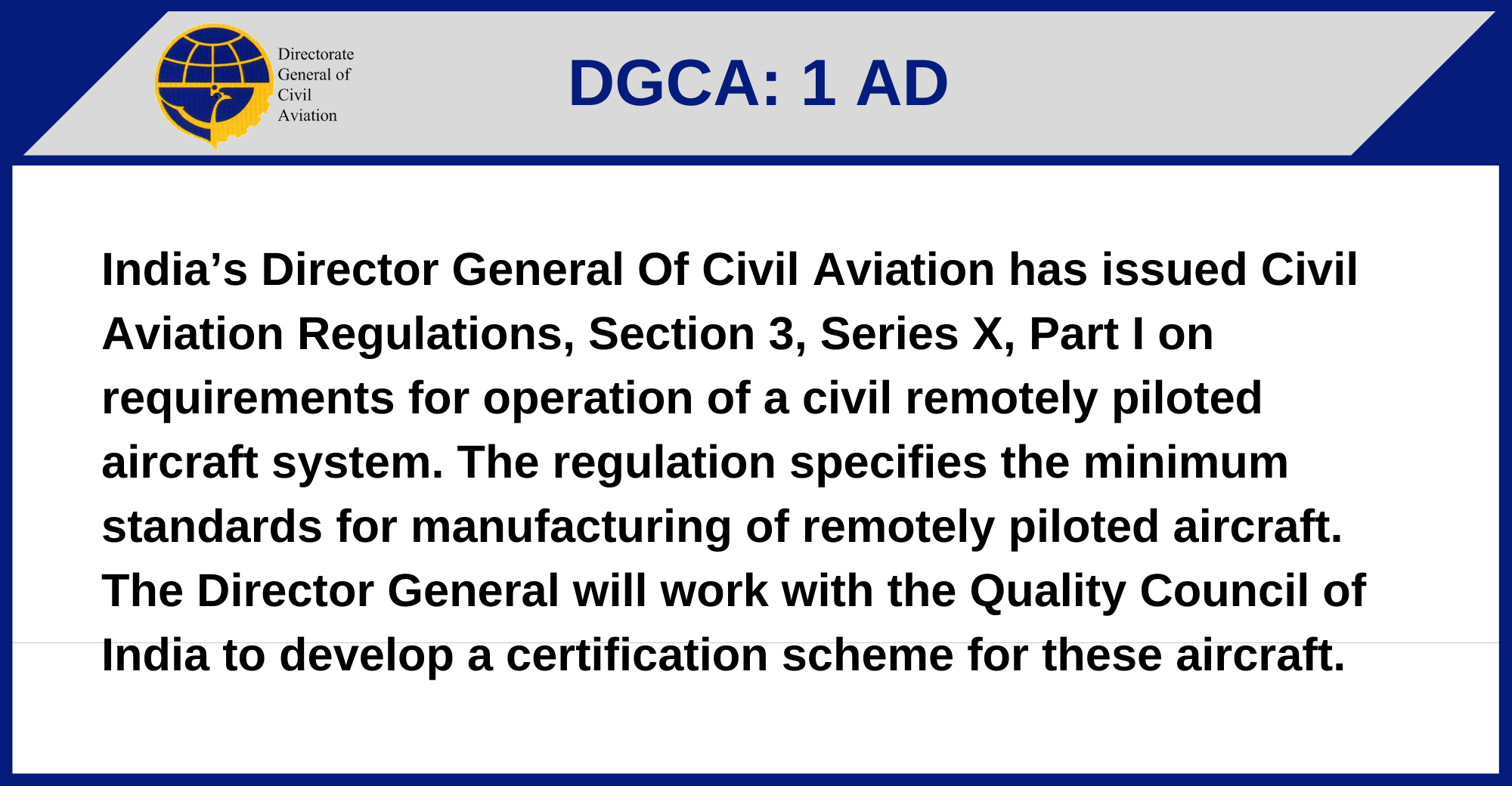
India’s Director General Of Civil Aviation has issued Civil Aviation Regulations, Section 3, Series X, Part I on requirements for operation of a civil remotely piloted aircraft system. The regulation specifies the minimum standards for manufacturing of remotely piloted aircraft. The Director General will work with the Quality Council of India to develop a certification scheme for these aircraft.

EASA has issued airworthiness directive 2020-0200 for Pilatus PC-24s, requiring software update of avionics utility management system, effective Oct. 1, 2020.
EASA has issued airworthiness directive 2020-0202 for Pilatus PC-24s, amending time limits and maintenance checks under airworthiness limitations section, effective Oct. 6, 2020.
EASA has issued airworthiness directive 2020-0202 for Pilatus PC-24s, amending time limits and maintenance checks under airworthiness limitations section, effective Oct. 6, 2020.

EASA has issued airworthiness directive 2020-0203 for Airbus A350-1041s and -941s, requiring modifying integrated control panels and amending airplane flight manual’s abnormal and normal procedures sections, effective Oct. 7, 2020.
EASA has issued airworthiness directive 2020-0204 for Powerjet SaM146-1S17s, -1S17Cs, -1S18s and -1S18CSs, requiring inspection of low pressure turbine, effective Oct. 7, 2020.
EASA has issued airworthiness directive 2020-0204 for Powerjet SaM146-1S17s, -1S17Cs, -1S18s and -1S18CSs, requiring inspection of low pressure turbine, effective Oct. 7, 2020.
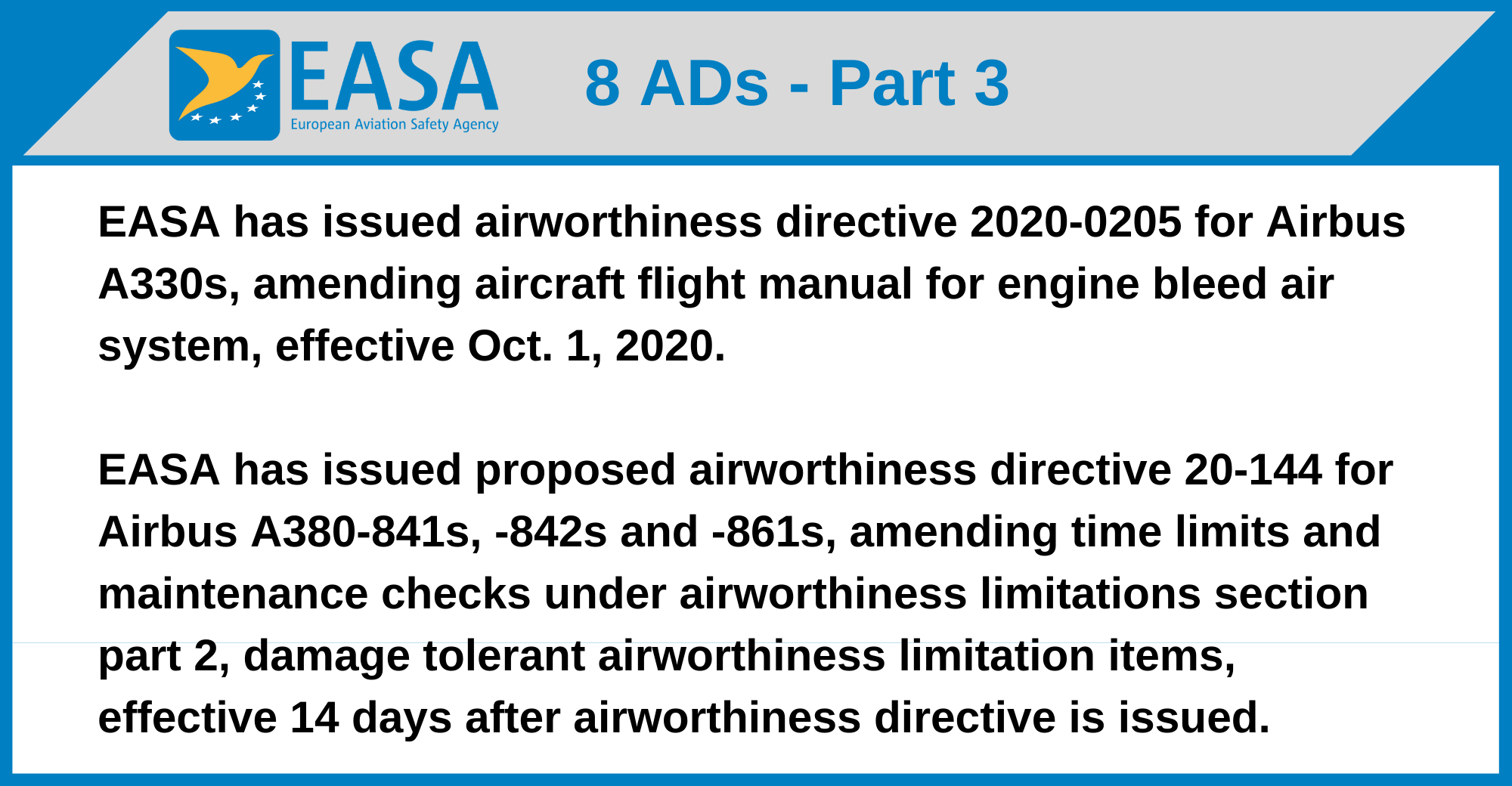
EASA has issued airworthiness directive 2020-0205 for Airbus A330s, amending aircraft flight manual for engine bleed air system, effective Oct. 1, 2020.
EASA has issued proposed airworthiness directive 20-144 for Airbus A380-841s, -842s and -861s, amending time limits and maintenance checks under airworthiness limitations section part 2, damage tolerant airworthiness limitation items, effective 14 days after airworthiness directive is issued.
EASA has issued proposed airworthiness directive 20-144 for Airbus A380-841s, -842s and -861s, amending time limits and maintenance checks under airworthiness limitations section part 2, damage tolerant airworthiness limitation items, effective 14 days after airworthiness directive is issued.

EASA has issued proposed airworthiness directive 20-145 for Airbus A340-213s, -541s, -642s and -643s, requiring modifying flight control backup control module, fuel control and monitoring computer, flight warning computer, braking and steering control unit, fuselage circumferential and longitudinal joints and reinforcement of wing leading edge overhang, effective 14 days after airworthiness directive is issued.
EASA has not adopted U.S. airworthiness directive 2020-18-12 dealing with the fuel quantity indicating system on certain Boeing 777-200s, -200LRs, and -300s.
EASA has not adopted U.S. airworthiness directive 2020-18-12 dealing with the fuel quantity indicating system on certain Boeing 777-200s, -200LRs, and -300s.
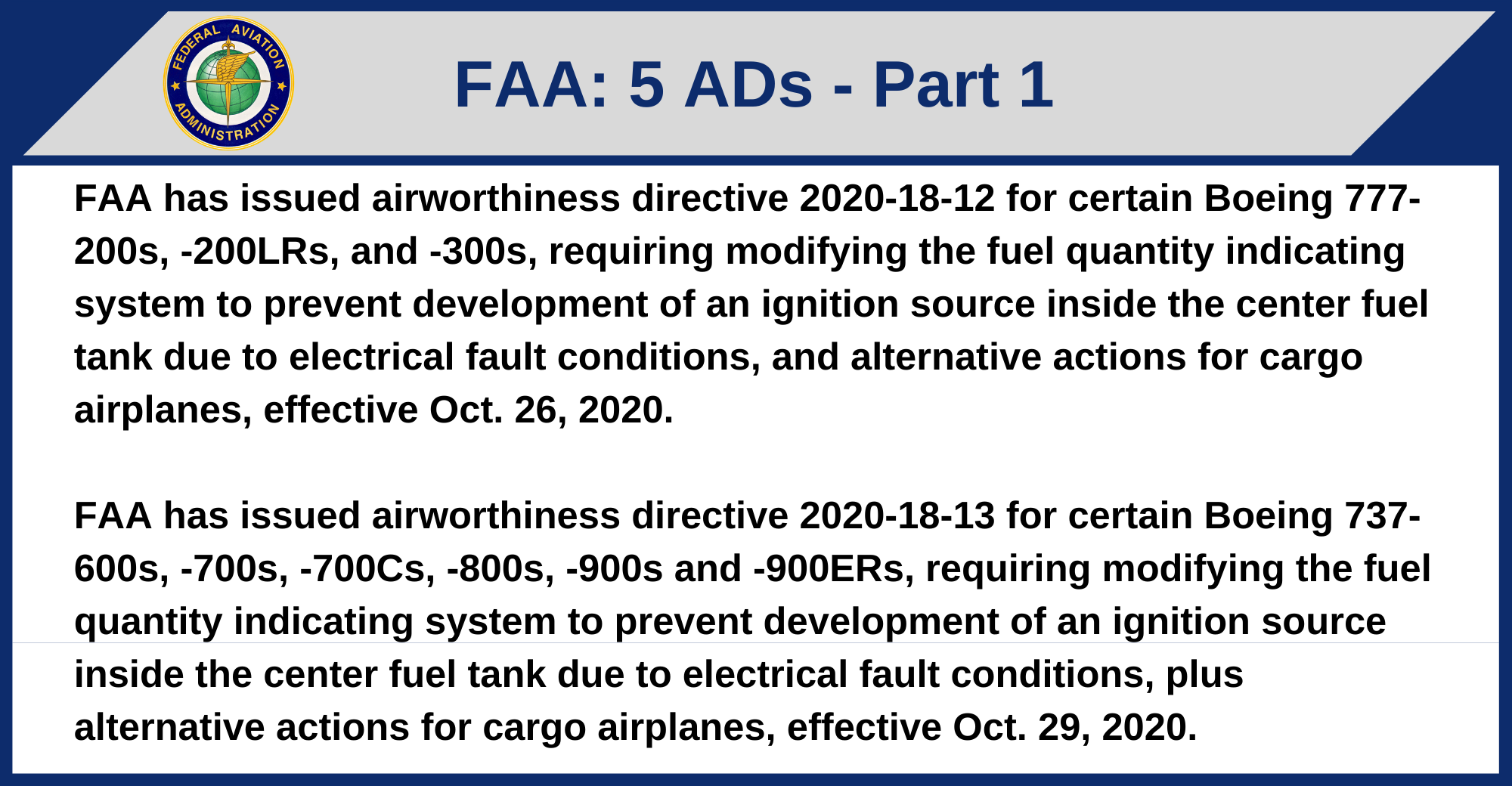
FAA has issued airworthiness directive 2020-18-12 for certain Boeing 777-200s, -200LRs, and -300s, requiring modifying the fuel quantity indicating system to prevent development of an ignition source inside the center fuel tank due to electrical fault conditions, and alternative actions for cargo airplanes, effective Oct. 26, 2020.
FAA has issued airworthiness directive 2020-18-13 for certain Boeing 737-600s, -700s, -700Cs, -800s, -900s and -900ERs, requiring modifying the fuel quantity indicating system to prevent development of an ignition source inside the center fuel tank due to electrical fault conditions, plus alternative actions for cargo airplanes, effective Oct. 29, 2020.
FAA has issued airworthiness directive 2020-18-13 for certain Boeing 737-600s, -700s, -700Cs, -800s, -900s and -900ERs, requiring modifying the fuel quantity indicating system to prevent development of an ignition source inside the center fuel tank due to electrical fault conditions, plus alternative actions for cargo airplanes, effective Oct. 29, 2020.

FAA has issued airworthiness directive 2020-18-15 for certain Airbus A350-941s and -1041s, requiring replacing nut on the thrust reverser hinge with a new nut, installing a new nut and washer if necessary, and applying a torque stripe at each hinge location, effective Oct. 26, 2020.
FAA has issued airworthiness directive 2020-18-10 for all Airbus A319-151Ns and -153Ns, A320-251Ns, -252Ns and -253Ns, and A321-251Ns, -252Ns, -253Ns, -251NXs, -252NXs and -253NXs, requiring removing Kathon FP 1.5 biocide from the fuel tanks and engines, effective Oct. 6, 2020.
FAA has issued airworthiness directive 2020-18-10 for all Airbus A319-151Ns and -153Ns, A320-251Ns, -252Ns and -253Ns, and A321-251Ns, -252Ns, -253Ns, -251NXs, -252NXs and -253NXs, requiring removing Kathon FP 1.5 biocide from the fuel tanks and engines, effective Oct. 6, 2020.
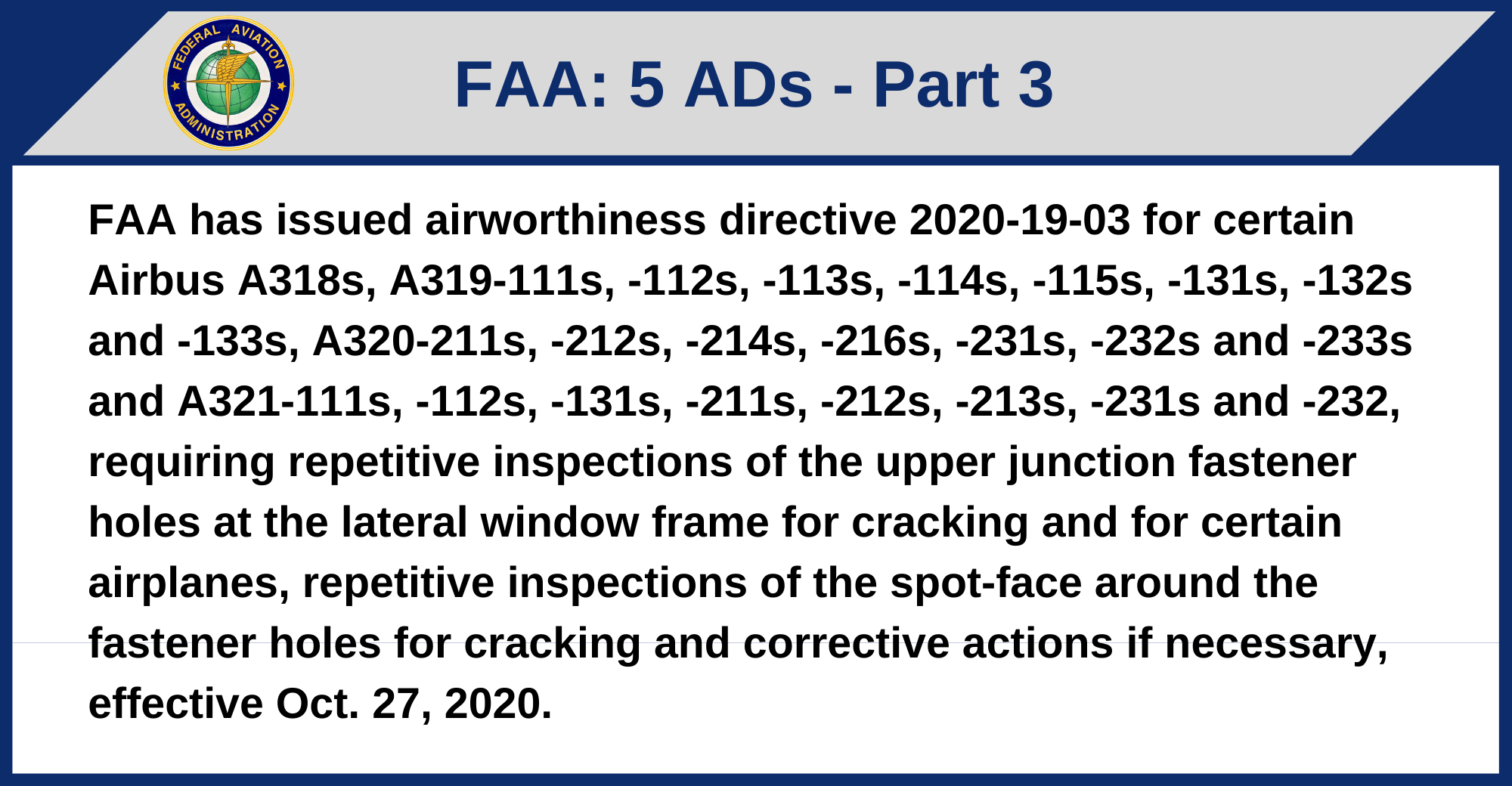
FAA has issued airworthiness directive 2020-19-03 for certain Airbus A318s, A319-111s, -112s, -113s, -114s, -115s, -131s, -132s and -133s, A320-211s, -212s, -214s, -216s, -231s, -232s and -233s and A321-111s, -112s, -131s, -211s, -212s, -213s, -231s and -232, requiring repetitive inspections of the upper junction fastener holes at the lateral window frame for cracking and for certain airplanes, repetitive inspections of the spot-face around the fastener holes for cracking and corrective actions if necessary, effective Oct. 27, 2020.

In 2020, Rosaviation has received 211 applications for compensation of lost income from provision of airport and ground support for aircraft. The funding limit for this subsidy in 2020 is $11 million. As of Sept. 24, 2020, 112 applications had been paid on a first-come, first-time basis, for 99% of the limit. Rosaviation is requesting additional funding from the reserve fund of the Government of the Russian Federation to make payments on all applications in 2020.
A listing of airworthiness directive and bulletins from around the world.